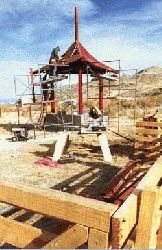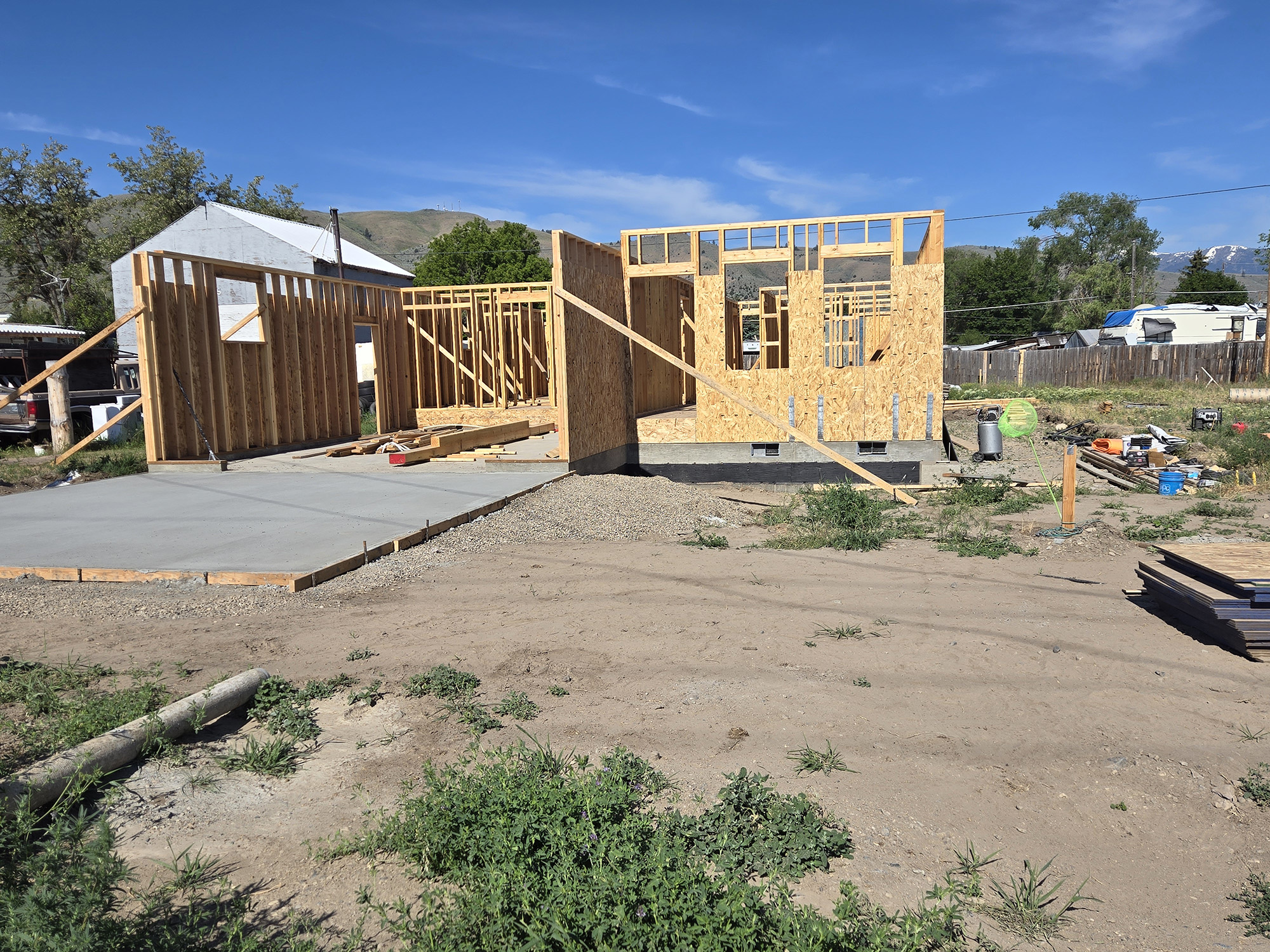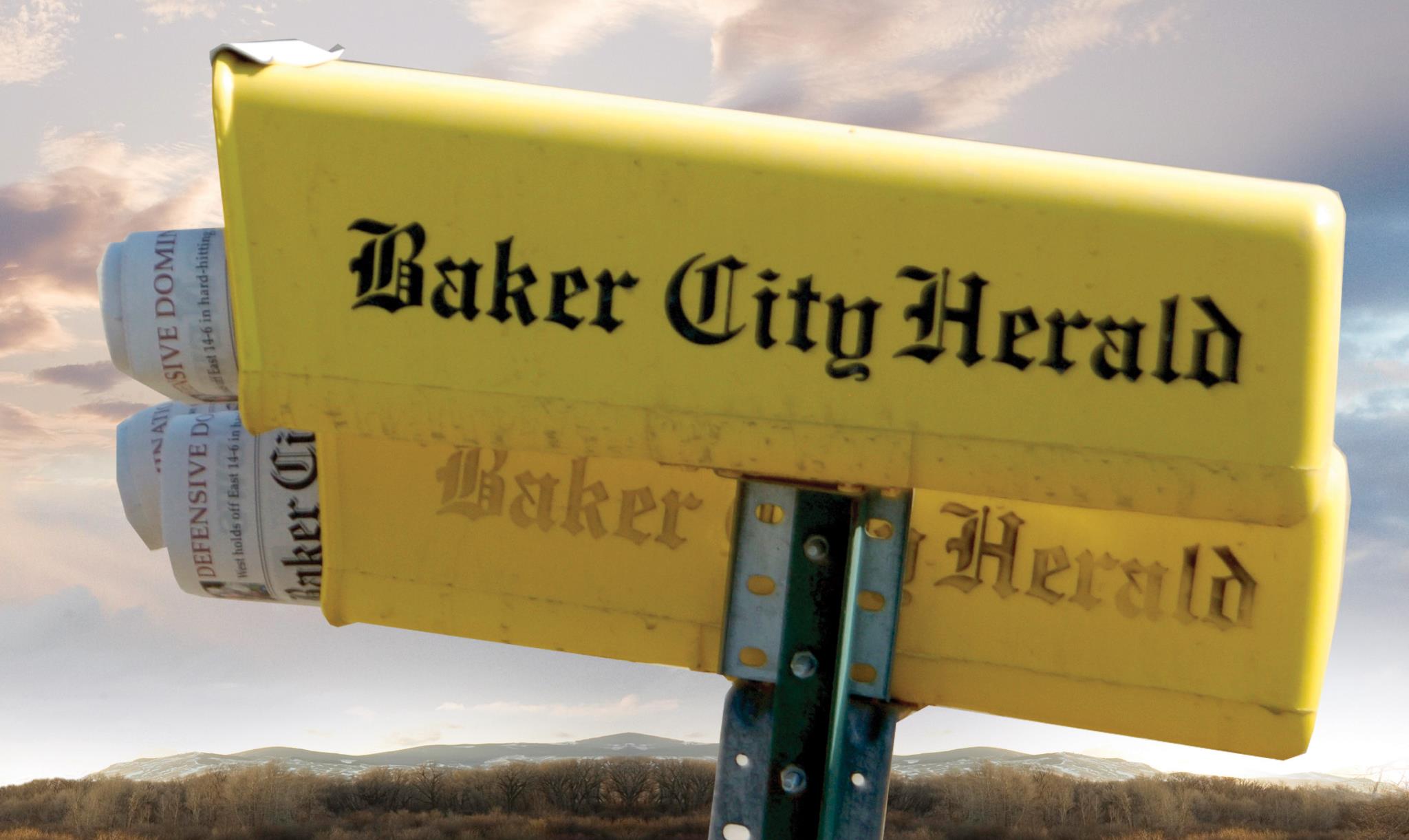Memorial built at Chinese cemetery
Published 12:00 am Tuesday, November 27, 2001

- The Chinese pavilion was built and disassembled, then sent to Baker City in crates. Al Mason and Larry Kelso of Sid Johnson and Company reassembled the structure at the Chinese Cemetery. (Baker City Herald photograph by S. John Collins).
By CHRISTINA WOOD
Trending
Of the Baker City Herald
If youve noticed a lot of activity at the historic Chinese Cemetery east of town recently, it wasnt because there was going to be a funeral.
But there will be a celebration of the lives of the people of the Middle Kingdom in Gum San, the Land of the Golden Mountain, the Cantonese name for the area that included the western United States in the 1800s when many Chinese left their homes and came here to work.
Trending
The Baker County Historical Society is contructing a monument at the cemetery site with money from a private donation.
When complete, it will resemble a pavillion from a classical Chinese garden, designed with the help of the firm that oversaw the construction of the Classical Chinese Garden in Portland.
According to Bea Jean Haskell of the Baker County Historic Society, one local resident was especially taken by the history of the Chinese in Baker County.
He said he used to take people up to the Lily White Mine site and other areas of interest to the Chinese and thought there should be some recognition of their contributions to our early community, she said.
A semi-official committee formed to seek out a project for funding by the R. and P. Harris Trust, which represents the local resident who prefers not to be identified.
We looked at various photos and even at the roof lines of local buildings trying to find a unique Chinese-style design for our project, Haskell said. But it wasnt until we read about the Classical Chinese Garden in Portland that we found our vision.
The garden is located at N.W. Third and Everett streets in downtown Portland.
The committee got in touch with the staff of the garden, named Garden of Awakening Orchids in Chinese, and were referred to Erik Nelson of Portland.
A simple pavilion design was selected and ordered through the Nelson Company from Suzhou, China.
Suzhou has long been famous for its classical gardens. Once the summer retreat of the wealthy and politically important of China, many families there built the gardens as inseparable parts of their homes. They lived, literally, as a part of the garden with the private and public rooms of the home intertwined with the elements of the garden.
The pavilion is handcrafted in Suzhou. The frame columns are made from fir from northeast China. It is designed and fabricated using traditional mortise and tenon joints and was shipped in two containers from Shanghai.
Lansu Consulting coordinated the design and work with the staff and volunteers of the newly opened Classical Chinese Garden in Portland, using plans, diagrams and more than 20 digital images of sample products and actual components during fabrication.
This is a unique piece in the United States as far as we know, but with similarities to the Moon-Locking Pavilion in the award-winning Portland Chinese Garden, Nelson said with considerable pride.
Locally, the Sid Johnson Company is working to assemble the pavilion.
We wanted to have craftsmen from Suzhou do the construction work, but we were unable to get Visa permits for the work, Haskell said.
The only problem was the instructions were all in Chinese, she added. An engineer with Nelsons staff was able to provide a translation for us.
The components of the pavilion came with two crates of glazed roofing tiles weighing 3,300-pounds each that had to be put on the roof before bad weather hits Eastern Oregon.
Chinese cemetary
There has been a resurgence of interest in the Chinese Cemetery, located on Windmill Lane just east of Interstate 84 off Campbell Street.
In September 1994, a team of Chinese-American youth, under the sponsorship of the Chinese Benevolent Society of Portland, visited Baker City and spend time cleaning up the site under the general supervision of the late James Evans, a member of the Baker County Historic Society and former superintendent of the 5J School District.
The Benevolent Society wanted their young people to learn more about the history of early Chinese emigrants to America. Also present at the clean up effort was Priscilla Wegars, editor of the book, Chinese Women of the West, and noted lecturer from Moscow, Idaho.
Local high school honors students from the classroom of Sharon Defrees have also put in many hours of labor into improving the site. A signboard, boundary fence and other improvements have been made.
Bea Jean Haskell of the Baker County Historical Society said the improvement project also received support from Bruce and Gloria Wong of Portland, members of the Benevolent Society, and Ralph Ward, Virginia Kostol and Scotty Haskell, all members of the historic society.
Historically, the Chinese have a long history in Baker County. Chinese laborers from the Middle Kingdom (the Chinese name for their country) worked in the mines and on construction projects like the great El Dorado Ditch which brought water to raise crops in the arid parts of the county.
Their meticulous approach to mining is particularily evident in the Chinese walls along Union Creek near Baker City. Both sides of the steep and narrow creekbed in the Blue Mountains are covered with terraced layers of carefully removed river rock.
They worked in the towns as waiters, as laundry men, merchants and as valued servants in the homes of the well-to-do and at a variety of other necessary occupations. One noted occupation was that of physician Ing Hay, the famous Chinese Doctor of John Day whose practice extended to many patients in the white community who often had little faith in their own Western educated physicians.
For years the largely male population was an active part of this community even though there were many laws passed (such as the curfew laws) that limited their freedoms and ability to earn a living. Despite this, a number of Chinese men became relatively wealthy and returned to China to live lives of comfort on Oregon gold.
There are no Chinese-American families now living in Baker City who are direct decedents of those pioneering men, but the county does have a number of families originally from the Peoples Republic of China and Taiwan.
Historically, the Chinese burials were only temporary. It was the intention of most of the families to exhume the bodies and return the bones to their homeland. By 1950, most of the bodies in the Baker City Chinese Cemetery had been returned to China. Today only one marked grave site is known to exist, that of Lee Chue who was buried there in 1938.








